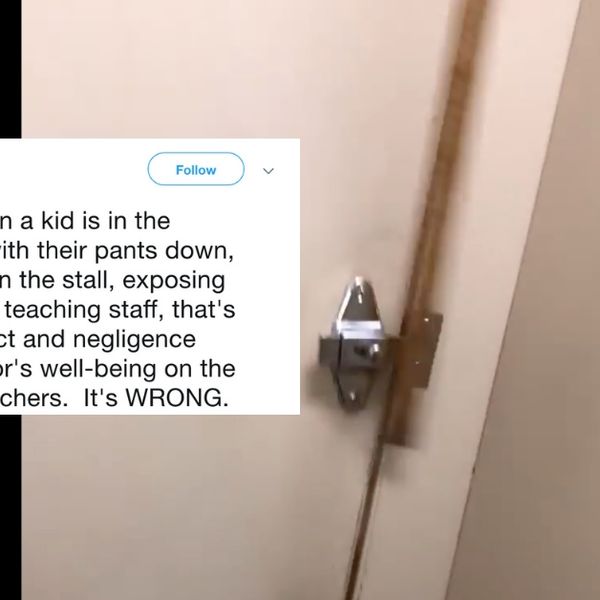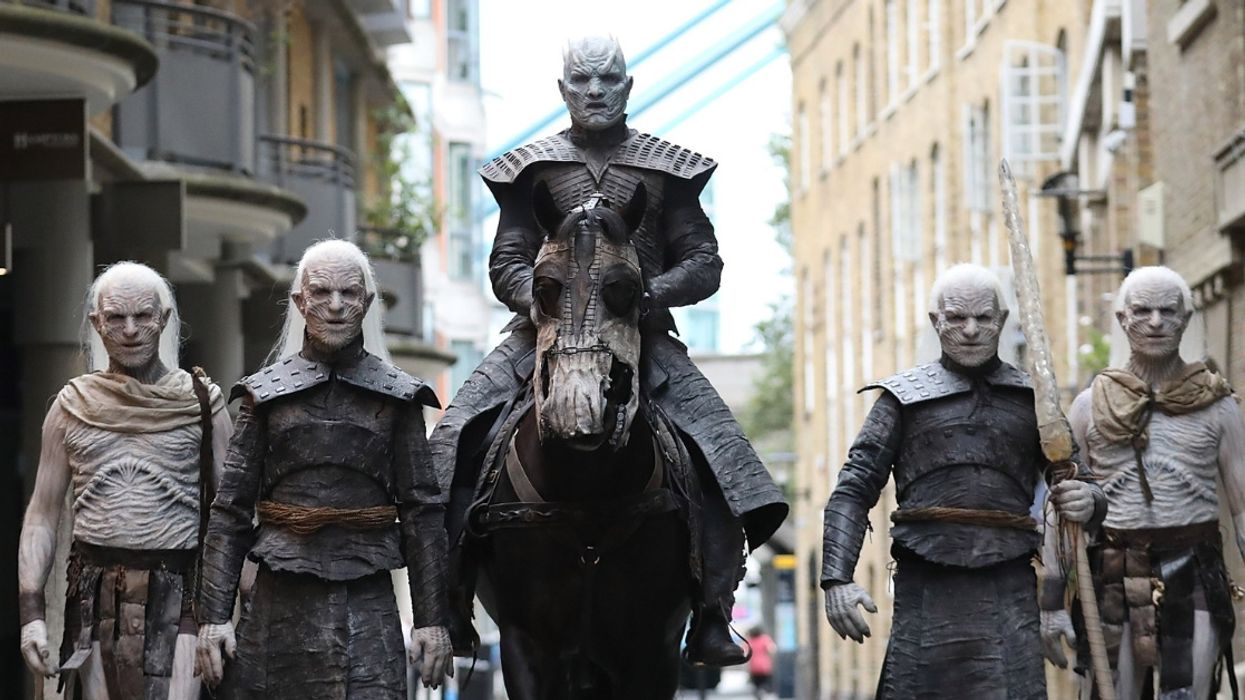Secret codes exist around the world for many reasons. The primary reasons? To decrease panic or increase privacy. The codes in the collection all fall into this category.
Thanks a bunch to Chris Baraniuk of BBC and Jamie Frater of ListVerse for their articles on Secret Codes that inspired this article. Links to their work are at the bottom of this article.
1.
2.
3.
4.
5.
6.
7.
8.
9.
10.
Visual codes
Not all codes are alphanumeric. Some are visual, intended to be hidden in plain sight. As BBC Future discovered earlier this year, many banknotes feature a specific pattern of dotscalled the EURion constellation, placed there to prevent people from photocopying money. Many copiers and scanners are programmed to spot it.
And online daters might want to use their profiles to alert potential partners to the fact that they have a sexually transmitted infection, but to do so discreetly. Theres a codeword for that, too: 437737. On a telephone dialing pad with letters associated with numbers, the number spells out herpes.
Other visual codes are scrawled in the landscape around us. One surprising example is the series of signs known as hoboglyphs a collection of symbols meant to provide information to travelling workers and homeless people. Among other things, these could indicate the quality of a nearby water source, or suggest whether the occupant of a house is friendly or not.
(Known as hoboglyphs, these nondescript graffiti tags highlight safe areas, water sources and information about police between the homeless (Credit: Flickr/Everfalling/CC BY 2.0)
The Ten Codes are a list of codes used by law enforcement officers in the United States. They are available on the Internet which would make them seem inappropriate for this list, but a large number of police departments have tried to have them made illegal for distribution, so they deserve a mention. The codes were developed initially in 1937 and were expanded in 1974. The California Police use a variety of extra codes which predated the ten codes. For example, a 187 (one eighty-seven) means homicide. In the ten codes system, a 10-31 means that a crime is in progress, a 10-27-1 means homicide (the 10 is usually not said when it is a three-number sequence), and a 10-00 (ten double-zero) means officer down all patrols respond.Wikipedia has a complete list of the police codes here.
In computer support, a variety of codes can be used when referring to a customer. One of these codes has become fairly well known on the internet: PEBKAC (Problem Exists Between Keyboard And Chair) but there are a variety of others that are lesser known. One of these is used when reporting a fault which has been fixed: The fault was a PICNIC (problem in chair not in computer), or ID 10 T Error ID 10 T is, of course, IDIOT. Let us hope that you never see this noted down on your file when a serviceman is fixing your computer.
Time Check (usually taking a similar form to: Time check: the time is 12:00) can be a code in stores for a bomb alert. It alerts the staff to follow the bomb procedure, which can be to either try to locate any suspicious packages, or to prepare to get the hell out. If you hear a time check in a store, it is probably a good idea to start moving toward the exit. Surprisingly and shockingly, the majority of stores that use this code actually expect their staff to search for the bomb certainly an aspect of the job that the majority of teenaged checkout operators werent expecting when they signed up I am sure.
A code 10 in hospitals can refer to a mass casualty or serious threat (such as a bomb alert), but the majority of people experiencing a code 10 will do so for another far more common reason: a code 10 authorization is made by a merchant when he needs to call a credit card company to enquire about your card. This means that he is suspicious of you or your card and doesnt want you to know it while he gets it checked out. When the credit card company hears that they have a code 10, they will ask a series of yes/no questions to the merchant in order to find out what the situation is. This will often result in the merchant keeping your card if they believe it is safe to do so. This type of call often results in a call to law enforcement.
Doctor Brown is a code word often used in hospitals to alert security staff to a threat to personnel. If a nurse or doctor is in danger from a violent patient or non-staff member, they can page Doctor Brown to their location and the security staff will rush to their aid. In some hospitals, code silver is used to refer to a person with a weapon, and code gray can mean a violent person without a weapon. Hospitals have a huge array of various codes to describe all manner of situations. They often differ from hospital to hospital and they are usually not internationally recognized. [Image courtesy of The Adventures of Dr. McNinja]
On a ship, a code oscar means someone has gone overboard. If the ship has to maneuver erratically to handle the situation, it must also send out blasts on the signal so that other ships nearby are aware of the fact that it is about to change its course. It should be noted that ships dont have an internationally standardized set of PA signals and they can differ from place to place, but this is a fairly commonly used one. Oh and a code delta can mean that there is a biological hazard though who knows what that might be on a passenger ship. And finally, Code Alpha often means medical emergency.
Code Bravo is the code phrase for a general security alert at airports. Unlike most of the codes on this list, the code is meant to cause alarm but not through knowing what it means: when this alert is raised, all of the security agents will begin to yell Code Bravo in order to frighten the passengers this is supposed to make it easier for the agents to locate the source of the problem without interference from the general public. For those of you who travel on ships from time to time, you may like to know that Code Bravo means fire and it is the most serious alert on a ship if it burns, you either get off or burn with it. Ships also often use sound signals, such as 7 short and 1 long, meaning man the lifeboats.
Inspector Sands (or sometimes Mr Sands), is a code for fire in the United Kingdom. Obviously it would not be appropriate for the service staff of a store to announce a fire publicly, so this code is used to alert the appropriate staff to the danger without upsetting customers. The wording differs from place to place and in the Underground network a recorded Inspector Sands warning is automatically triggered by smoke detectors. In some shops you will hear the code used in a phrase such as Will inspector Sands please report to the mens changing room if the fire is in the mens changing room. It was played on a continuous loop through the underground during the July 7, 2005 bombings, and has been incorrectly described as a code word for a bomb the frequently used code for a bomb in the Underground is Mr Gravel for example, Mr Gravel is in the foyer. Mr Sands (or sometimes Mr Johnson) is also used in theaters in the case of fire. You can listen to a recording of the Underground Inspector Sands warning here.
WalMart gets its own item on this list because they have a large number of codes that are store specific. Some of their codes should not worry you for example a code 10 or a code 20 just means that there has been a dry spill or a wet spill the biggest danger this poses to you is that you might slip over. A code 300 calls for security and a code orange means there has been a chemical spill. But here are the ones you really need to worry about: Code red means there is a fire in the building get the hell out if you hear this. Worse still, a code blue means there is a bomb in the building. Exit swiftly but dont run in case they think you planted it. A code green means there is a hostage situation and a code white means there is an accident. The one you are most likely to hear is a code c which is simply a call for customer service (usually meaning that more cashiers are needed). And finally the most famous WalMart code well, its so famous it needs its own item:
Code Adam was invented by Walmart but it is now an internationally recognized alert. It means missing child. The code was first coined in 1994 in memory of Adam Walsh, a six-year old, who went missing in a Sears department store in Florida in 1981. Adam was later found murdered. The person making the announcement will state we have a code Adam, followed by a description of the missing child. As soon as the alert is heard, security staff will begin to monitor the doors and other exits. If the child is not found within 10 minutes, the police are alerted and a store search begins. Also, if the child is found in the first 10 minutes in the company of an unknown adult, the police must be called and the person detained if it is safe to do so. In 2003, the US Congress passed legislation making a Code Adam program compulsory in all federal office buildings. A similar alert is called an AMBER alert, a backronym for Americas Missing: Broadcasting Emergency Response but initially named for Amber Hagerman, a 9 year old girl who was abducted and murdered.
This Store Clerk's Reaction To A Stolen Sneaker Prank Should Earn Him Employee Of The Month
Twitter user @HarvinthSkin decided to give a sales associate as his local shoe store a heart attack with a silly prank. All over the internet, people are sharing the prank and sending their well-wishes to the poor worker who experienced a moment of pure panic!
I had to give it a try? 😂🤷🏾♂️ Instagram : @harvinthskin https://t.co/Am45kGWYLQ— Harvinth Skin (@Harvinth Skin) 1543237039.0
Don't worry too much about the unfortunate sales employee, however—it turns out he was given a raise as a consolation shortly thereafter!
I apologised and gave man like Martin a hug after that! 😂😂😂 JD Sports, give him a raise! 💵 Do not try this unless you’re Zizan ⛔️— Harvinth Skin (@Harvinth Skin) 1543238141.0
The owner of the shoe store made clear to Skin that his employees were not to be messed with.
IM SO HAPPY THAT MAN LIKE MARTIN IS SEEN HERE WITH THE BOSS OF JD SPORTS ASIA AND IS GETTING A RAISE FOR HIS VALIAN… https://t.co/vL5QO2xCB5— Harvinth Skin (@Harvinth Skin) 1543300966.0
The Big Boss of JD Sports MY! Fuck me 😂😂😂🙃🙃🙃 https://t.co/nq3O0bdS92— Harvinth Skin (@Harvinth Skin) 1543239495.0
On Twitter, people loved the sales clerk's reaction to Skin running out of the store.
@harvinthskin That sales be like https://t.co/0i27D7vIWK— Ignasius Kurniawan (@Ignasius Kurniawan) 1543239042.0
@harvinthskin Best one yet cause he went out the store lmao— Andradé (@Andradé) 1543265867.0
Some thought they may have reacted differently in the same situation...
@harvinthskin @thirdeyescribe Me watching you run out of the store like https://t.co/31kkJcHjOV— The Count 🙎🏼♂️ (@The Count 🙎🏼♂️) 1543370777.0
But everyone got a good laugh out of the innocent prank.
@harvinthskin @kxsxhh This shit was so funny....it made my day— Manvir (@Manvir) 1543247327.0
@harvinthskin @queenb0414 😂😂😂😂😂😂 https://t.co/bejrX57i6w— 💙 (@💙) 1543275269.0
@harvinthskin @iced_coffeee https://t.co/bqP08ZK3r9— Manuel Jr. (@Manuel Jr.) 1543358200.0
The incident also gave us some priceless reactions!
@harvinthskin “whew my bruce lee almost came out” https://t.co/SOUOZ4IzBE— Nyree. (@Nyree.) 1543344926.0
@harvinthskin @ClassyyMocha 🤣🤣🤣🤣🤣🤦♂️Saw his whole life n last paycheck that fast!!— ♈FZA of FUPA-Tang Clan🇧🇿 (@♈FZA of FUPA-Tang Clan🇧🇿) 1543288463.0
@sofarhangone @harvinthskin @ChiSupreme @llma95_ Run up? More like run out!! https://t.co/HwHu2TT4vO— Desi Kubrick (@Desi Kubrick) 1543320755.0
Remember, everyone: it's important to try before you buy!
@harvinthskin @mjcz1 @LeeODell84 @reevesyboi93 try before you buy. why not— 494949494949 (@494949494949) 1543512590.0
George R.R. Martin Just Confirmed A Popular 'Game Of Thrones' Fan Theory About White Walkers
Game of Thrones scribe George R.R. Martin is promoting his new book in the A Song of Ice and Fire series, and provided insight into a group of characters fans have been waiting to learn more about.
As an author known to inject symbolism into the fantastical worlds he creates, Martin revealed that the icy group of White Walkers from Game of Thrones personified climate change.
What the ancient humanoid race of icy creatures stand for is a concept many have theorized all along.
Now fans received confirmation from the author himself.
Martin may have prognosticated climate change while he was writing GoT. The cold that transcends upon Westeros sounds eerily familiar.
"It's kind of ironic," Martin told the New York Times.
"Because I started writing 'Game of Thrones' all the way back in 1991, long before anybody was talking about climate change."
"But there is — in a very broad sense — there's a certain parallel there. And the people in Westeros are fighting their individual battles over power and status and wealth."
He added:
"And those are so distracting them that they're ignoring the threat of 'winter is coming,' which has the potential to destroy all of them and to destroy their world."
"And there is a great parallel there to, I think, what I see this planet doing here, where we're fighting our own battles. We're fighting over issues, important issues, mind you — foreign policy, domestic policy, civil rights, social responsibility, social justice. All of these things are important."
Martin continued:
"But while we're tearing ourselves apart over this and expending so much energy, there exists this threat of climate change, which, to my mind, is conclusively proved by most of the data and 99.9 percent of the scientific community. And it really has the potential to destroy our world."
"And we're ignoring that while we worry about the next election and issues that people are concerned about, like jobs."
Marten stressed the importance of caring for the environment, adding that protecting it should be a top priority.
"So really, climate change should be the number one priority for any politician who is capable of looking past the next election."
"We spend 10 times as much energy and thought and debate in the media discussing whether or not N.F.L. players should stand for the national anthem than this threat that's going to destroy our world."
When the author was asked if he could "pick the best real-world, present-day match — politicians, celebrities" and pair them up with corresponding characters from his novels, Martin answered: "Pass."
Fire and Blood: 300 Years Before a Game of Thrones, is expected to be released on November 20.
H/T - NYtimes, Twitter, Mentalfloss
This Brand's Tweet History Is A Hilariously Fitting Representation Of A Brand's Life Cycle 😂
Carl's Croutons tried their hand at social media to advance their brand.
But their objective got derailed when their tweet ignited a confusing thread that sent everyone down the rabbit hole.
@topherflorence captured highlights from the thread that received over three thousand retweets for its zaniness alone.
Can you follow?
the history of every brand on twitter somehow https://t.co/fWVXsElCvr— D🌑CFUTURE (@D🌑CFUTURE) 1540403954.0
The bread crumbs company endeavored to stir excitement for the brand by encouraging participation with the following tweet:
"Taking our first steps on the www!! tell us your favorite crouton recipes! #croutons #yum"
Harmless, right?

But somewhere along the way, the brand mixed business with politics. @religiousgames noticed that Carl's Croutons issued a one-word directive: vote.
The Twitter user asked, "What does it mean?"
@topherflorence What does it mean? https://t.co/IKifvva7ba— Vincent Gonzalez (@Vincent Gonzalez) 1540408943.0
Did the Carl's Croutons account manager get his social media account wires crossed? Possibly. But then we're not sure.
@topherflorence responded by saying, "lol that wasn't me i would posted something way dumber."
@religiousgames lol that wasn't me i woulda posted something way dumber— D🌑CFUTURE (@D🌑CFUTURE) 1540409220.0
The following tweet from Carl's Croutons attempted damage control:
"Carl's Crutons [sic] regrets the inappropriate tweet from earlier and we sincerely apologize to the people of The Republic of Malta."

So how did Carl's Croutons insult the Republic of Malta?
@topherflorence @oggborbis ...how did they insult Malta? I need to know.— astronaatti (@astronaatti) 1540405285.0
@Bestorb shed some light on why the Southern European island country may have been insulted by sharing a YouTube clip of episode 1008, "Final Justice," from Mystery Science Theater 3000.
Did it have something to do with the country's dominant population of women?
@astronaatti @topherflorence @oggborbis https://t.co/9imm31y8cM— Nick Bestor (@Nick Bestor) 1540429565.0
The thread spun off in all different directions.

@topherflorence @xoxogossipgita laughing hardest at crouton recipes— super normal internet (@super normal internet) 1540492558.0

@topherflorence That last one is life 🙌🏽— Rich F. Santiago (@Rich F. Santiago) 1540418084.0
@topherflorence WOW this was a ride.— Jackal's Husband, Yuko (@Jackal's Husband, Yuko) 1540405005.0
@ItsBobberto @topherflorence @austin_walker Late stage social media.— Mr. Jackpots (@Mr. Jackpots) 1540435914.0
There were many takeaways from the esoteric thread, but the one directive really stood out.
@topherflorence @MaxKriegerVG Haha, you got me. But seriously, vote.— Benoit Doidic (@Benoit Doidic) 1540414697.0
@topherflorence @zoebread Clever girl. https://t.co/i5VB74s8F9— brott rambler but spooky (@brott rambler but spooky) 1540478919.0
@topherflorence @NoraReed This was a wild ride.— Queer Eye for the Animorphs Reboot (@Queer Eye for the Animorphs Reboot) 1540412903.0
@topherflorence @seangentille I’m experiencing a new level of cringe right now— Helle Hansen 🌸 (@Helle Hansen 🌸) 1540423182.0
@topherflorence @ZaaackKoootzer This is the greatest thing I've seen all day— your very own monica bellucci dream (@your very own monica bellucci dream) 1540406700.0
@topherflorence @spacetwinks Optimistic engagement. Regret. 'How do you do, fellow kids.' Unity through shared outr… https://t.co/6VGrLNPZVp— Ink-stained @ MFF 2018 (@Ink-stained @ MFF 2018) 1540405582.0
@topherflorence @spacetwinks 2 is where they decided to hire a social media manager. 3 is when they decided to hire a different one.— Ink-stained @ MFF 2018 (@Ink-stained @ MFF 2018) 1540412100.0
@LaserBlade @topherflorence yeah i actually think they're pretty good croutons but then again they pay me to say that— cool dog mowing lawn (@cool dog mowing lawn) 1540436982.0
@topherflorence @mattfx This is magically funny like Goofy doing an unannounced set in a small black room— M💎R (@M💎R) 1540482697.0
@topherflorence @ZaaackKoootzer This is the greatest thing I've seen all day— your very own monica bellucci dream (@your very own monica bellucci dream) 1540406700.0
There's still an unanswered question.
@topherflorence I need to know the Malta story tho— NeoSorosbot (@NeoSorosbot) 1540423045.0
So who is Carl's Croutons anyway? Nobody knows. Just vote.
Clever Dog Tricks McDonald's Customers Into Feeding Her By Pretending To Be A Stray 😂
It's a dog eat dog world out there and sometimes a girl has to do what a girl has to do. At least that's what one dog owner realized when she caught her pooch trolling the streets looking for an easy meal.
Facebook user Betsy Reyes busted her dog Princess who was out moonlighting as a stray in order to play on the sympathies of strangers. It seems Princess likes to wander off to her favorite hangout, the local McDonald's, and work the drive through lane like a pro.
And that's what she did right up until Reyes busted her scam. Reyes, who lives in Oklahoma City, took to Facebook and outed Princess in the most hysterical way, saying:
"If you see my dog @ the McDonald's on shields, quit feeding her fat ass bc she don't know how to act & be leaving the house all the time to go walking to McDonald's at night. She's not even a stray dog. She's just a gold diggin ass bitch that be acting like she's a stray so people will feel bad for her & feed her burgers."
Lots of scammers out there.
@CBSNews My lab Would jump the fence every morning as I got ready to work and when I went to leave he would reappea… https://t.co/NJhg4ZuGq1— Anneik 💛 (@Anneik 💛) 1540434345.0
@CBSNews https://t.co/UqWvClKi8z— Bruinlover- follower of Nakia (@Bruinlover- follower of Nakia) 1540418292.0
@CBSNews I TOOK MINE TO THE DRUGSTORE AND WHILE I WAS PAYING HE STOLE A CANDY BAR, WALKED RIGHT OUT THE DOOR WI… https://t.co/U3DlWunzcK— PUEBLO294 (@PUEBLO294) 1540415919.0
@LCaro294 @CBSNews Mine stole a butterdish at my mum’s house, ate all the butter then buried the butterdish to hide the evidence.— Tricoteuse (@Tricoteuse) 1540418005.0
@CBSNews My dog would 100% do this if she could get out of the house. On our walks she stands in the doorways of fo… https://t.co/33ovz44HUX— Skulls&Bacon (@Skulls&Bacon) 1540420511.0
@BillichThomas @skullsandbacon @CBSNews 100% would hand over my bagel, if only because she looks so annoyed with me… https://t.co/aQs5qKhETN— Claire Pettie (@Claire Pettie) 1540434235.0
It's an adorable story, but maybe get the dog a collar with identification?
@CBSNews Pretends? Leaves the collar stashed around the corner, or what?— Jim Snell (@Jim Snell) 1540429214.0
@CBSNews This is adorable but this dog should 100% be wearing a collar and also get microchipped! Love this story :)— Minka “ACAB” Eisenhower (@Minka “ACAB” Eisenhower) 1540418766.0
Not everyone thought the story was cute.
@CBSNews Great way to keep your dog safe. 🙄— 🧚🏻♂️ Free Hugs 🌊 🇺🇸🇳🇴🇫🇮☮️⚛️ Ⓥ🌱😷 (@🧚🏻♂️ Free Hugs 🌊 🇺🇸🇳🇴🇫🇮☮️⚛️ Ⓥ🌱😷) 1540414161.0
@CBSNews Unless you can keep your dog safe at home and not out in traffic where she could be hit by a car, stolen,… https://t.co/6BMPMLYgYs— Lindsey McBride (@Lindsey McBride) 1540435397.0
Of course, when a girl's gotta eat, a girl's gotta eat.
@chabsmescudi Funny.... but time to build a super gate. https://t.co/NZBE1s3lm6— OEL𝕊𝕂𝕐 (@OEL𝕊𝕂𝕐) 1540238320.0
@chabsmescudi The dog: https://t.co/FSmeFYhspT— Angie (@Angie) 1540231585.0
@BetsysReyes @chabsmescudi Your dog every night after standing on the road https://t.co/mrTCMOtOVA— N.A.S.A (@N.A.S.A) 1540235406.0
@chabsmescudi I would have been mad if my dog didn’t bring anything back. https://t.co/qb7ED7cwMG— Name Change (@Name Change) 1540325221.0
Let's hope Princess has learned her lesson and stays home.
H/T: Huffington Post, Mashable















